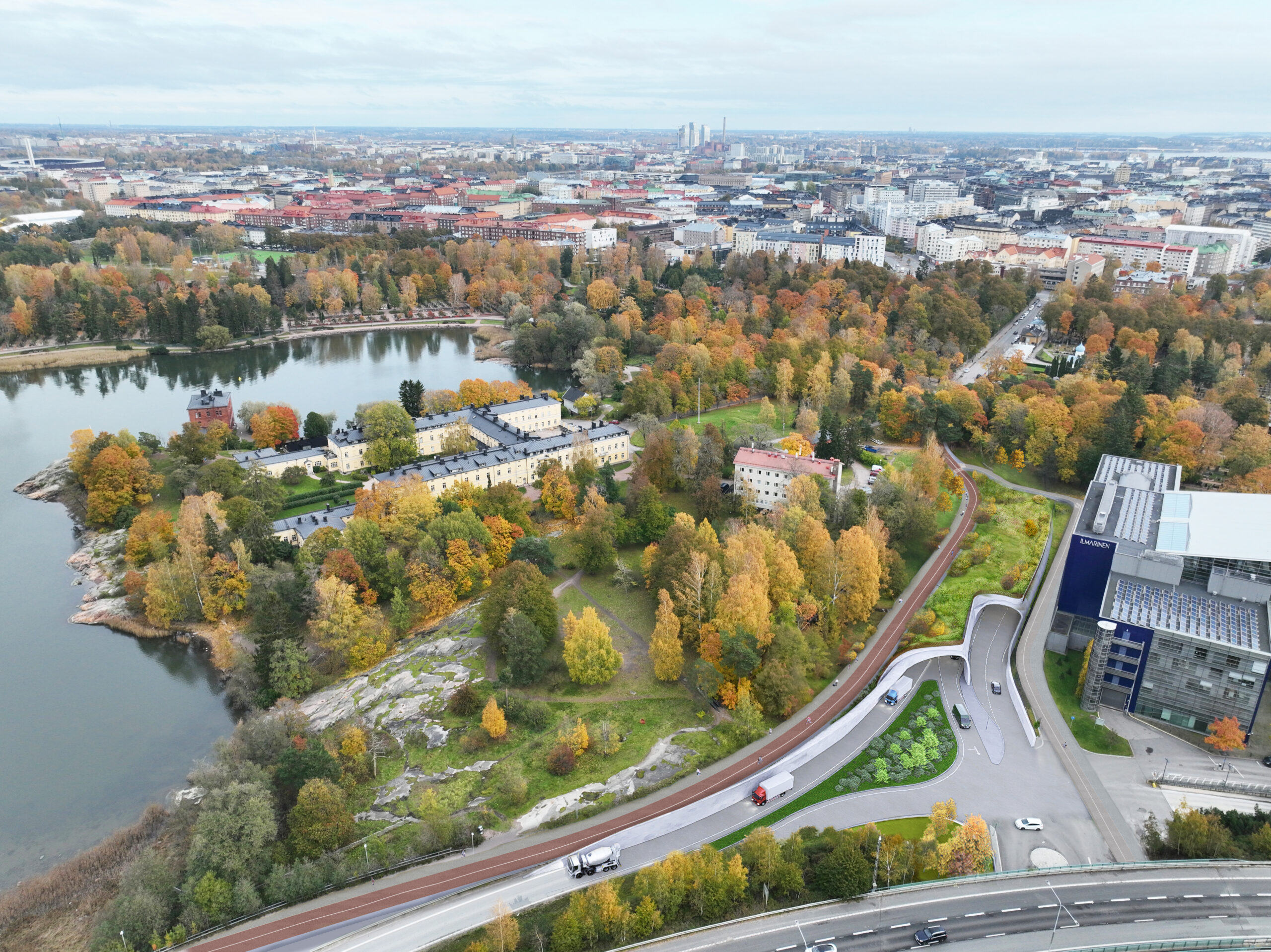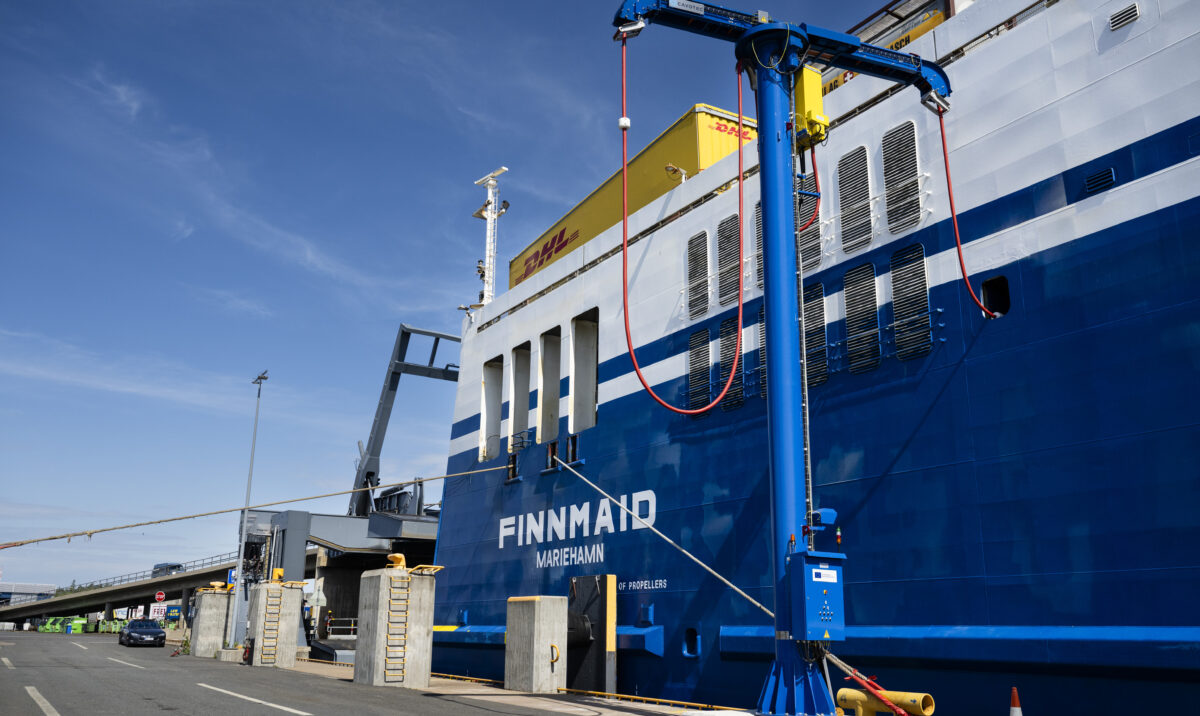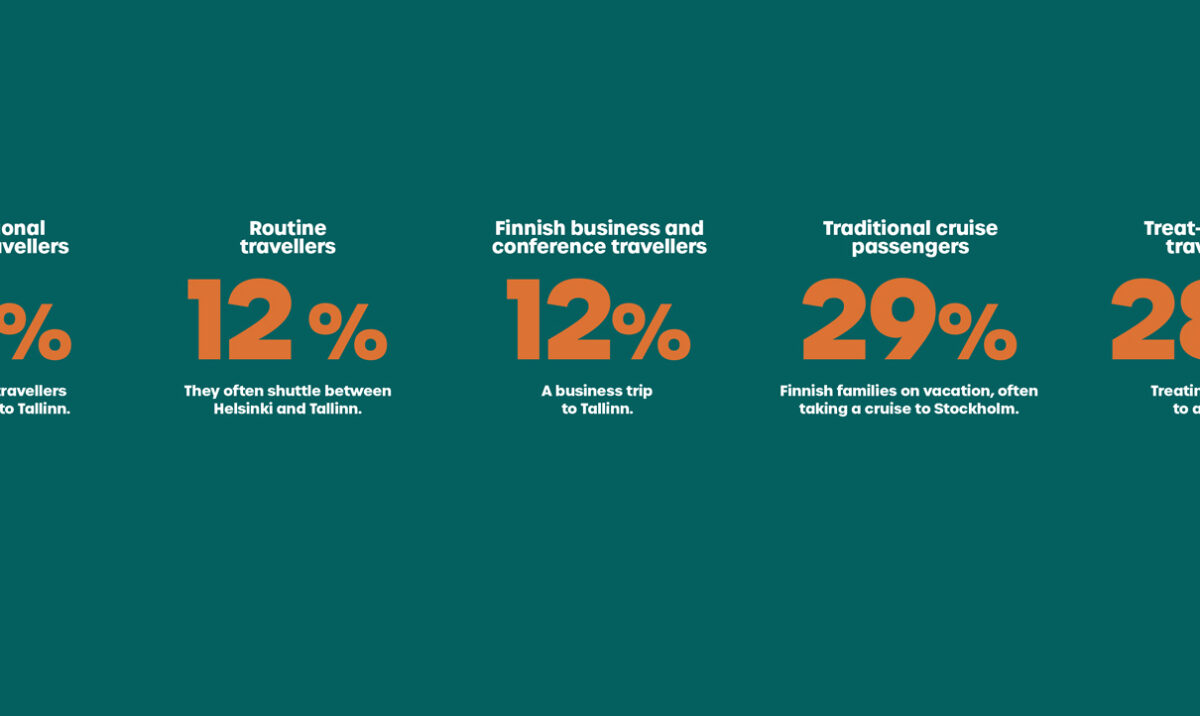
Closer to the highway in Lapinlahti: “Helsinki will be a city for people”
The city plan for a port tunnel connecting the West Harbour to Länsiväylä highway is currently being drawn up. Further planning has brought the tunnel mouth closer to the highway, and there will be some terracing around the opening.
There is a never-ending stream of trucks in the Jätkäsaari district of Helsinki. Ships arrive at the West Harbour ten times a day on Mondays to Fridays, and a few times less at weekends.
The port tunnel will reduce the amount of traffic in Jätkäsaari, as both heavy traffic and a large proportion of car traffic will move into the tunnel. The tunnel will enable Tallinn traffic to be centralised on the West Harbour. It will also lead to an approximately 75 per cent reduction in port-related traffic in the centre of Helsinki.
“The tunnel project is part of a larger development programme at the Port of Helsinki, in which Tallinn traffic will be centred wholly on Jätkäsaari and Swedish traffic on Katajanokka. This will free up the South Harbour for more diverse urban activities,” says Paavo Jääskeläinen, Project Manager for the Port of Helsinki’s tunnel project.
The city plan for the port tunnel is currently being drawn up. The old T1 terminal building at the West Harbour in Jätkäsaari will be demolished to make way for a new Maritime Centre. One end of the port tunnel will be located under the Maritime Centre. The tunnel will lead to Länsiväylä highway, at the edge of Lapinlahti Park, next to Ilmarinen’s headquarters.
“In the latest design, the tunnel mouth has been brought closer to the highway, and there will also be some slight terracing around the opening. Other traffic arrangements at the Salmisaari end of the tunnel will remain largely unchanged,” says Jääskeläinen.
“Our goal is to increase the amount of turnip-rooted chervil in the park.”
The new design also employs a special thin-rock roof construction technique that will enable a shorter trench than was previously planned. These special techniques will enable a solution in which the Lapinlahti dog park area – a core zone for endangered flying squirrels – can be completely saved.
Turnip-rooted chervil to be protected
Lapinlahti Park is home to an endangered species of moth (Depressaria chaerophylli) that feeds on turniprooted chervil. Before construction begins, any turnip-rooted chervil found in the excavation site will be moved to another location in Lapinlahti Park.
“We’ve made a compensation plan for turnip-rooted chervil. Turnip-rooted chervil will be planted in different areas of the park, and we will consult biologists to ensure that it starts to grow and larvae move to the new locations. Our goal is to increase the amount of turnip-rooted chervil in the park,” says Jääskeläinen.
Most of the planned excavation site is currently bare rock. Once the tunnel has been completed, a park deck will be built on top of it. The deck will be covered in soil, and bushes and trees will be planted. A narrow road runs between the tunnel area and Ilmarinen’s headquarters, and the City of Helsinki is planning to turn it into a new cycle path.
Jääskeläinen says that the goal is to create a pleasant and stylish area that respects nature. For example, the district heating line that runs through the park will be moved underground, and will disappear into the earth at the edge of the concrete tunnel.

The tunnel will streamline traffic and reduce noise
Jääskeläinen started in his role as the Port of Helsinki’s project manager for the port tunnel in August 2024. He has been involved in the project since 2018 through his former employer. Jääskeläinen, who has prior experience in rock construction, redesigned the port tunnel’s route.
“The port tunnel will have a significant impact on traffic flow and noise reduction. We’re building a city centre for people, so that Helsinki will be a city for people.”
The Helsinki Urban Environment Committee will review the proposed city plan for the tunnel next spring. The City estimates that it will be put before the City Council in late 2025. If everything goes to plan, the new passenger terminal in Jätkäsaari (the Maritime Centre) and its connecting tunnel will be opened in 2032.





